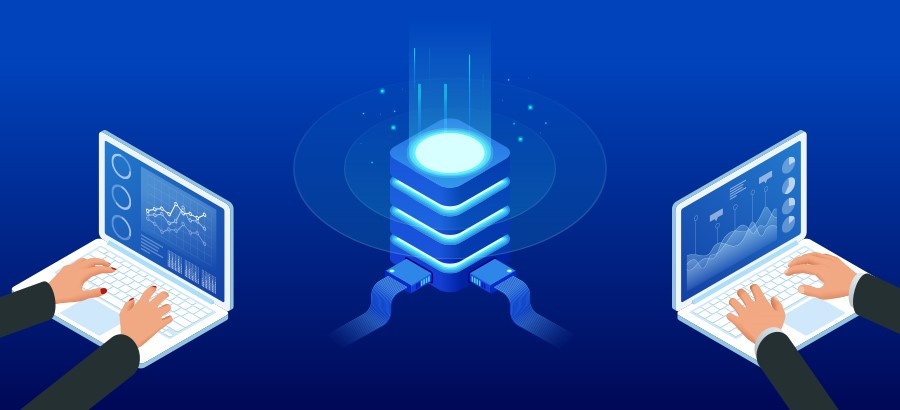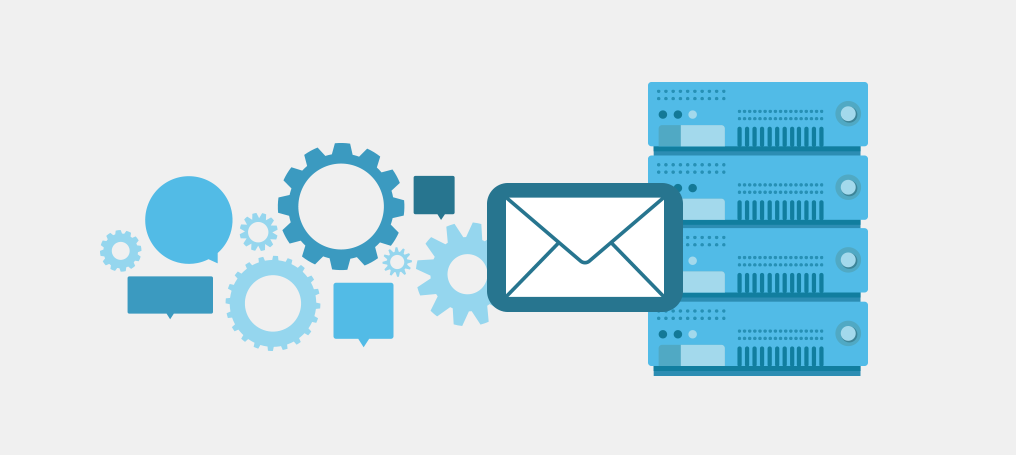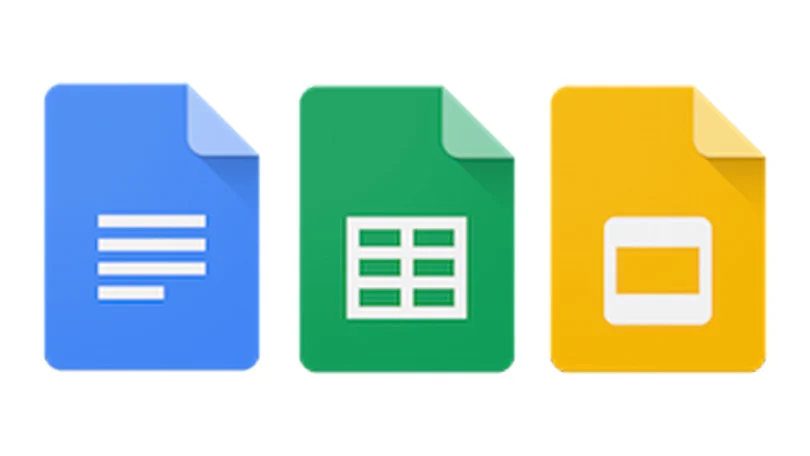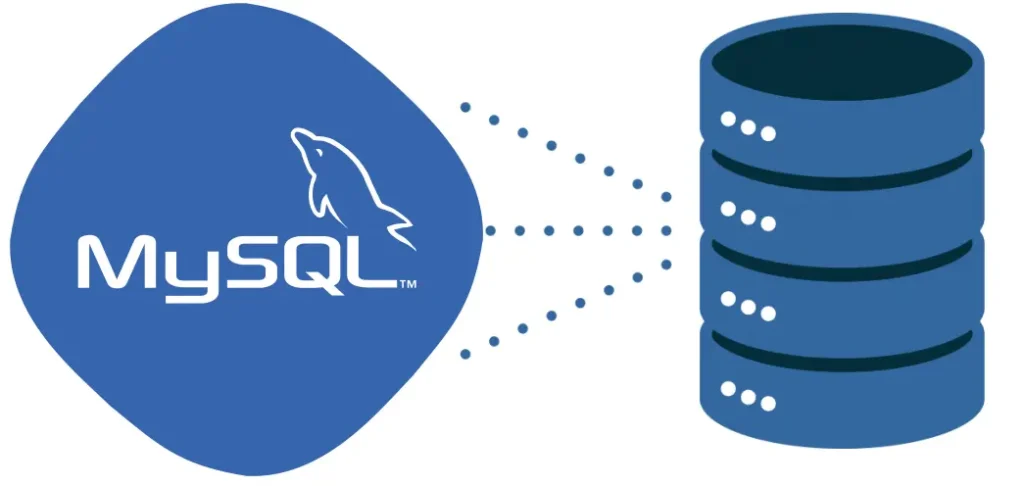Table of Contents:
- What is a server and what are the basic types that exist?
- There are many types of servers that differ in their functions and features. Some of the most commonly used servers include:
- Webserver
- Mailserver
- File server
- Application server
- Database server
- Conclusion
Last updated December 6th, 2023 06:04
A server is a machine or computer system that provides services to other computers or devices on a network. Essentially, it is the central hub in a network that allows users to share information, data, applications, or other important resources. A server can be a physical computer or a virtual machine (which runs on a physical machine in the network and is serviced by virtualization software). The computing power, memory, and other resources of a server are sized based on user requirements (i.e. the number of accesses per day, data size for storage or transfer, and many other factors). So take a look in this rticle, what is a server and what are the basic types that exist?
What is a server and what are the basic types that exist?
Servers are a critical component of modern information technology, enabling users to access information and services remotely. The importance of these machines was truly realized during the Covid pandemic, when the number of people working from home skyrocketed.
There are many types of servers that differ in their functions and features. Some of the most commonly used servers include:
- Web server – provides web pages and content on the internet.
- Email server – enables the sending and receiving of emails.
- File server – provides file sharing and storage on the network.
- Application server – provides an environment for running online applications.
- Database server – stores and provides access to database information (MySQL, MSSQL, PgSQL, etc.).
Webserver

The web server is the most commonly used type of server. It provides users with access to web pages and other content on the internet. When a user enters a web page address (domain) into a web browser, the request for the page is sent to the web server (the connection between the domain and server is established through DNS). The server responds with a web page whose content is sent to the user’s computer.
Web servers use various protocols, such as HTTP (Hypertext Transfer Protocol), which allows the transfer of web pages on the network. A more modern version of this protocol is HTTPS, which encrypts the transfer between the server and the user’s computer using an SSL certificate. Web servers also use different programming languages, including PHP, ASP, Java, or Ruby. The most commonly used web servers currently include Apache (Linux) or IIS (Windows).
Mailserver

An email server is a type of server that allows users to send and receive emails over the internet. When a user sends an email, it is sent via DNS and MX records to the destination email server, which then delivers it to the recipient’s address. Email servers use various protocols such as SMTP (Simple Mail Transfer Protocol), POP3 (Post Office Protocol), or IMAP (Internet Message Access Protocol). POP3 and IMAP are used for receiving mail, while SMTP is used for sending mail. Similar to a web server, an email server can transmit messages in plain text or encrypted formats.
File server

A file server provides users with file sharing and storage on a network. Users can store and share files online, allowing for easy collaboration and information exchange between users. File servers use various protocols, such as FTP (File Transfer Protocol) or SFTP (Secure File Transfer Protocol) for transferring files over the network. Many of today’s cloud storage services, such as Google Drive, can also be considered file servers. These servers are becoming increasingly popular, especially for backing up both personal and business data. Many cloud storage services also allow for encrypted data storage, ensuring that only users with the proper password can access the data. There are many open source solutions available today for creating a file server, such as Next Cloud or Own Cloud.
Application server

An application server provides an environment for running online applications on a network. These servers allow users to access applications without the need for installation on their own computers. Application servers use various technologies, such as Java EE (Enterprise Edition), .NET, or Node.js to run applications on the network. One example is Google Docs, which provides online tools for creating and sharing documents or spreadsheets. It is no longer necessary to have spreadsheet software installed on your own computer when you can use this platform, which offers these applications online through an application server.
Database server

A database server stores and provides access to database information. Database servers use various database systems, such as MySQL, Oracle, or Microsoft SQL Server, for storing and managing database information. Database servers can be standalone machines or also be part of a web server, which complements it. Databases are necessary for running almost all modern content management systems, such as WordPress, Joomla, Drupal, or various e-commerce solutions.
Conclusion
Did you have learned, what is a server and what are the basic types that exist? If you own a website, this can help you gain at least basic knowledge of how your website works and which server with which technologies it uses. In a separate article, we will take a closer look at each server and its basics
The website is created with care for the included information. I strive to provide high-quality and useful content that helps or inspires others. If you are satisfied with my work and would like to support me, you can do so through simple options.
Byl pro Vás tento článek užitečný?
Klikni na počet hvězd pro hlasování.
Průměrné hodnocení. 0 / 5. Počet hlasování: 0
Zatím nehodnoceno! Buďte první
Je mi líto, že pro Vás nebyl článek užitečný.
Jak mohu vylepšit článek?
Řekněte mi, jak jej mohu zlepšit.

Subscribe to the Newsletter
Stay informed! Join our newsletter subscription and be the first to receive the latest information directly to your email inbox. Follow updates, exclusive events, and inspiring content, all delivered straight to your email.
Are you interested in the WordPress content management system? Then you’ll definitely be interested in its security as well. Below, you’ll find a complete WordPress security guide available for free.

